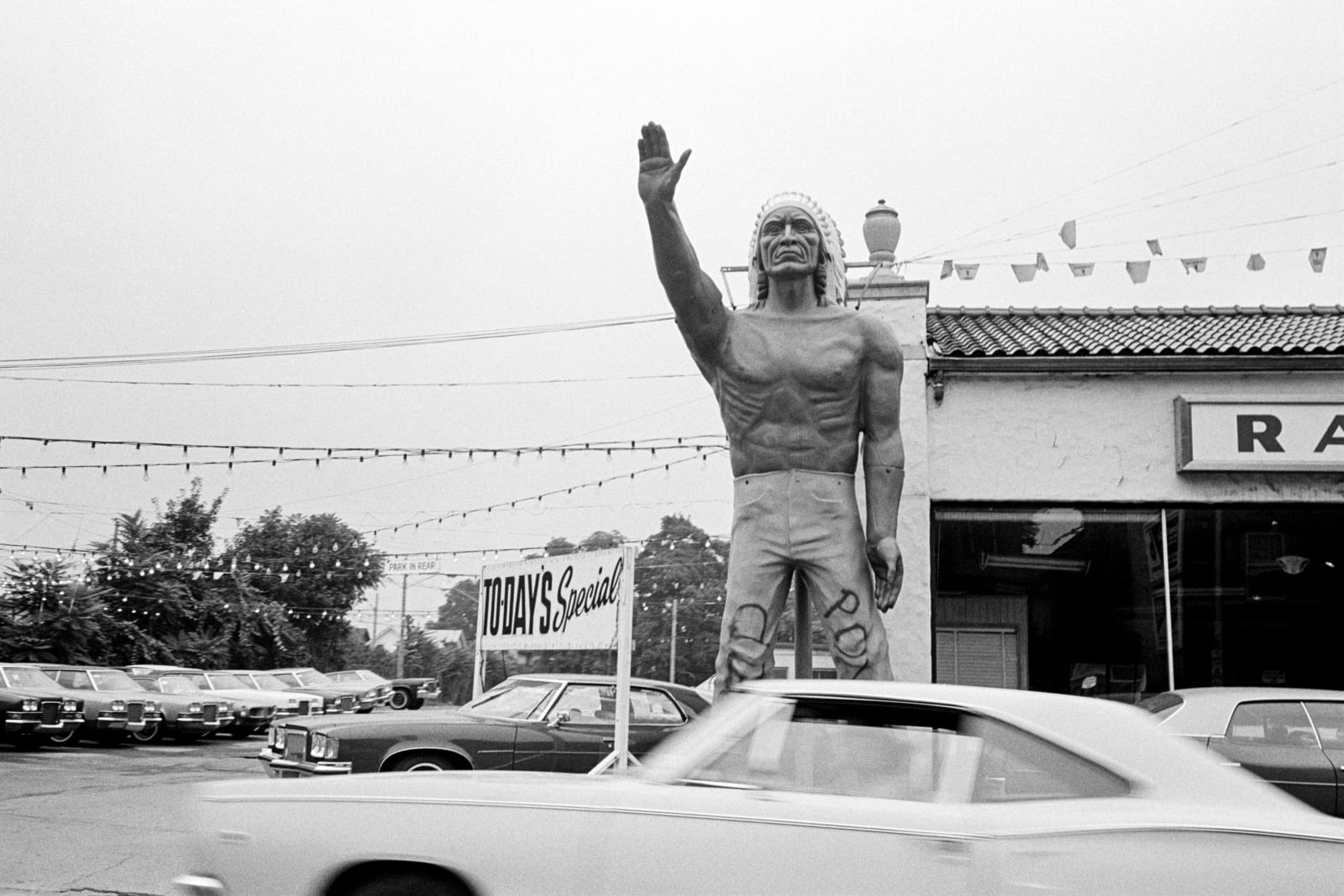
Clark Winter American, b. 27/10/1951
.
Paper: 40.6 x 50.8 cm / 16 x 20 in
.
Clark Winter's compelling photograph captures a towering fiberglass statue, one of the iconic "Muffler Men" that dominated American highways during their golden era. This monumental figure, standing approximately 22 feet tall, represents the bold commercialism that defined roadside America in 1972.
The statue belongs to International Fiberglass's family of mass-produced "Giant Men," manufactured between 1963 and 1972 to attract motorists to businesses along highways. These hollow sculptures became emblematic of an era when bigger meant better, and roadside businesses competed through supersized spectacle.
Winter's composition transforms commercial kitsch into compelling documentary, capturing the surreal juxtaposition between the giant's heroic proportions and modest small-town Albion. The photograph embodies his fascination with automotive culture and spaces where commerce meets community. By 1972, these giants neared production's end, making Winter's documentation particularly prescient.
The image reflects broader themes in American visual culture: tension between mass production and local character, democratization of monumental art, and how advertising imagery became vernacular landscape. Winter's documentary eye captures not merely promotional statue, but symbol of postwar American optimism and belief that scale could solve attention problems in an increasingly mobile society.
The photograph serves as historical record of roadside America's most audacious period, when entrepreneurs believed towering fiberglass figures could stop traffic and generate business. Today, with fewer than 200 surviving nationwide, Winter's image preserves vanishing commercial folklore, documenting the moment when roadside attraction met documentary art.